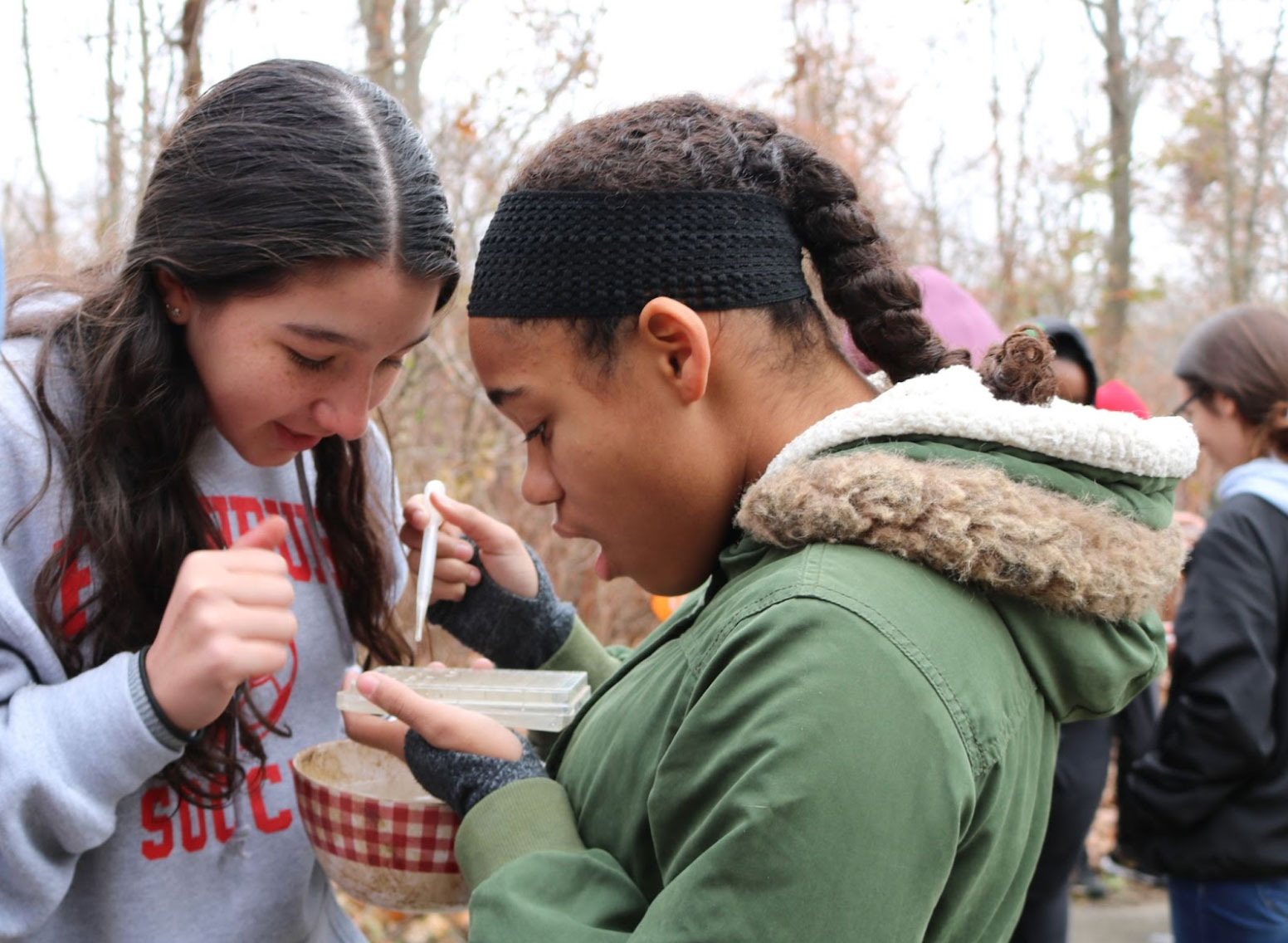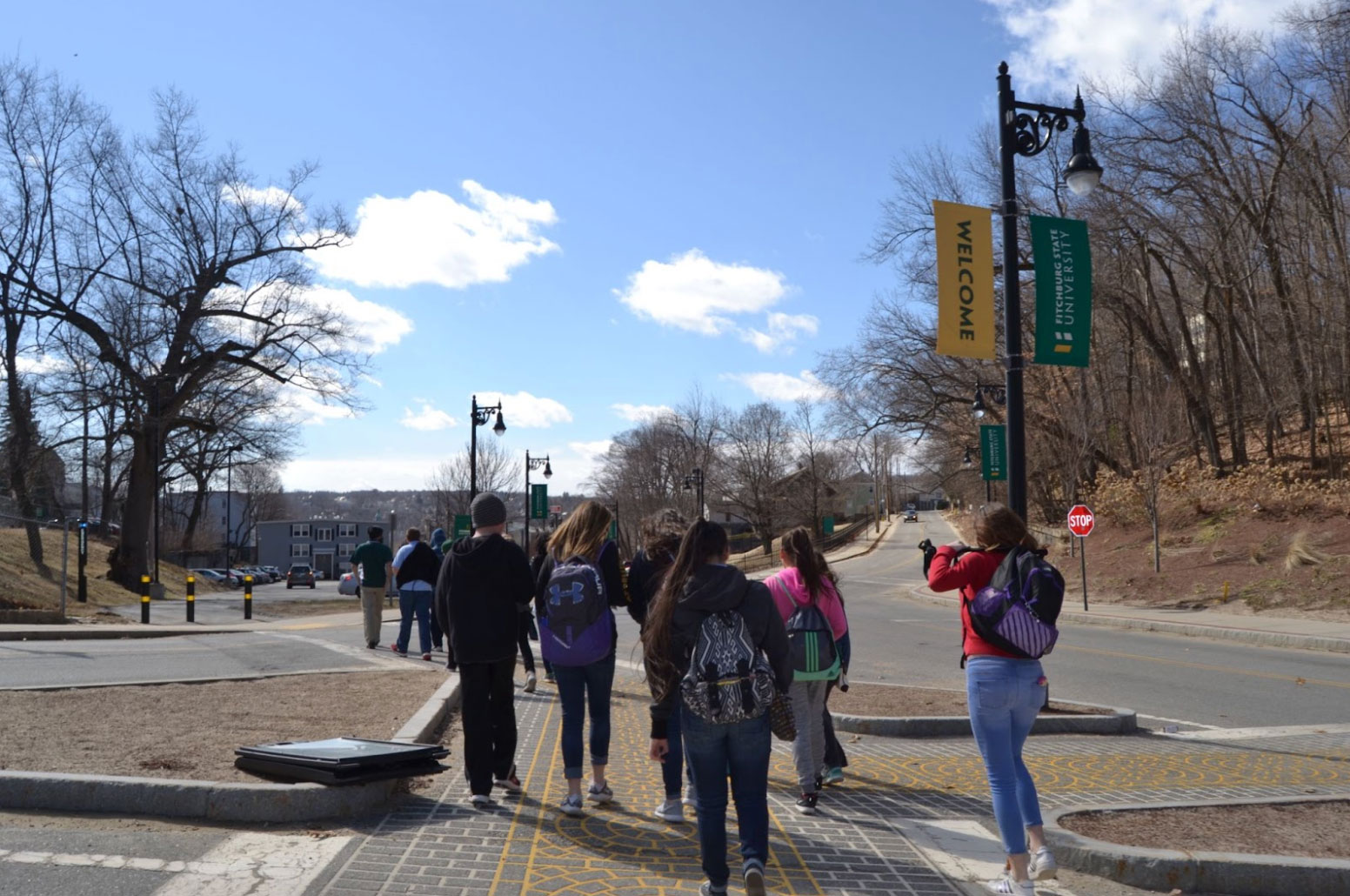We recently revised our mission and vision statements, and described our efforts to address issues of diversity, equity, inclusion, and justice in several of our research projects.
We know that this was only a beginning. As we said, “We are still learning how to design science, technology, engineering, and mathematics resources that are more socially and culturally relevant, how to support teachers in contextualizing materials to better meet students’ needs and backgrounds, how to ensure more diverse students’ inclusion in the STEM classroom, how to foster social justice in the STEM classroom and the world, and how educational research can benefit all students.”
Who better to learn from than teachers?
Tim Muhich teaches high school chemistry and a semester-long course called Global Climate Change at the Battle Creek Area Math and Science Center in Battle Creek, Michigan. Muhich and his colleague Scott Hanson use SageModeler to help students model systems and explain real-world phenomena such as energy transfer and gas laws.
Muhich defines equitable science teaching as “setting up situations where every student has the opportunity to learn as much as they can, starting wherever they are.” He uses phenomenon-based learning because it doesn’t prescribe a predetermined pathway or rely on rote-learning worksheets. Instead, students work together in small groups, where a diversity of backgrounds and perspectives make for a stronger final product.
One tool he recommends is the driving question board. Students write their questions on sticky notes and put them on a shared wall space. Muhich then refers to the notes, looking for opportunities for classroom activities and experiments. For example, when one student questioned whether density played a role in evaporation rate and cooling, Muhich asked about liquids students were familiar with that were less dense than water, and then on the spot had the class run an experiment with the cooking oil and rubbing alcohol they suggested. Finally, students write the answers on their own sticky notes. “This builds a sense of ownership in the students and helps ensure they are getting what they individually need to know in order to be able to explain the phenomenon.”
Muhich notes that the pandemic has exacerbated longstanding inequities, so it is more important than ever to be intentional about meeting students where they are. He observes, “It also requires recognizing the trauma that many students have and are continuing to experience, and engaging in activities and interactions with students that are trauma informed.” Muhich has all but eliminated homework to reduce any negative impacts situations outside of class might have on student learning.
Rebecca Colo is a STEM educator at Longsjo Middle School in Fitchburg, Massachusetts. Currently serving as a Math Instructional Coach, Colo has also run a STEM program for students and worked as a resource coach for science teachers. She recommends GEODE, GeoCode, and GeoHazard because “they take science concepts that aren’t easy to experiment with in a classroom, and are thus usually taught out of a textbook, and provide models that make those concepts interactive and real.”
In particular, she notes that GeoCode, which engages students in transforming real-world data about volcanoes into interpretable visualizations through block programming, reinforces her ideas about equity in science. She acknowledges that coding is sophisticated for seventh graders, but believes the curriculum connects perfectly to the Next Generation Science Standards (MS-ESS3-2) and sees access as an equity issue. According to Colo, “If we don’t give students a chance to try, they can’t show us what they can do. If we do give them the chance to interact with these real-world and sometimes complex technologies and concepts, they may discover an interest and/or learn new skills we didn’t anticipate.” In this case, while the coding might have appeared as a barrier, it was a strength for many students who drew from their past experiences playing games on Code.org.
Like Muhich, Colo suggests starting with where students are, asking them what they are wondering about, and helping them find the answers. She sees equitable science teaching as “providing students with opportunities to learn science no matter what school they go to or what background they come from, and also expecting that they can and will learn science.”

Students from Longsjo Middle School in Fitchburg, Massachusetts, at the EcoTarium.
Colo tries to find ways for students to make connections to prior experiences and to give them a voice. For instance, when teaching about natural disasters and mitigation efforts, she includes opportunities for students who have traveled to or lived in other parts of the world to share their experiences. As a lifelong resident of Massachusetts, she has experienced hurricanes, but her students have described flooding, tornadoes, earthquakes, and volcanic eruptions. It’s important, she says, to “avoid making assumptions about what knowledge students may or may not have.”
She notes that school structures may contribute to issues of access to science class. “We find inequities when students don’t have access to science at all because they are being pulled for various interventions and somewhere along the way we decided that science is expendable.” Colo also worries that schools may perpetuate inequities if some students are denied access to equipment or science labs based on assumptions about how they may behave. The key, she believes, is to provide supports for students to be successful. One way she does this is through field trips to colleges with diverse populations, so her students can see older kids who look like them working towards futures in science.

Students from Longsjo Middle School touring Fitchburg State University.
Karla Orosco teaches 7th Grade Integrated NGSS Science at Admiral Akers Elementary, a K-8 school on Naval Air Station Lemoore in the Central San Joaquin Valley in California. Orosco’s students come from a variety of cultural backgrounds and from all over the U.S. and bases around the world, but they share the unique experience of attending school on a military installation. She has used Model My Watershed and is currently field testing the WATERS curriculum.
For Orosco, equitable science “means that all students learn science as much as they learn language, math, and social studies.” She is thrilled that in her current district middle schoolers get science instruction for the same amount of time as other subjects and have a high-quality lab with funding to cover materials. Orosco invites guest speakers and scientists from different backgrounds and pathways to her classes, and like Colo, she takes her students on field trips to large, diverse universities.
Orosco is encouraged to pursue science professional development and tries to support K-5 teachers at Akers who have had little training in science. She searches online for ideas to integrate equity in science lessons, using resources from NSTA, OpenSciEd, CSEdWeek, Code.org, HHMI Biointeractive, and TikTok. She is also inspired by a group of science teachers across the country during weekly #scitlap chats on Twitter. “We are a small group but learn a lot from each other,” she says.
Fema Bernido teaches science at the De Anza High School in Richmond, California, where her students use InquirySpace activities to learn about independent experimentation and CODAP to analyze data. Bernido believes differentiation in both her daily teaching and assessments is key for equity, access, and inclusion. “Whenever I introduce a lesson,” she says, “I gauge students’ prior knowledge to know how much scaffolding to provide.”
She aims to provide learning experiences that are meaningful for all students and to ensure that her students are “engaged and show enthusiasm to learn science concepts.” According to Bernido, this is the crux of equitable science teaching.
While she acknowledges that she is still learning how to include social justice in the science classroom, Bernido selects phenomena from different cultural backgrounds and infuses real-world issues in her science lessons. She also incorporates short histories of scientists, including their name, nationality, and gender in her instruction, which, she says, helps “students realize that not all scientists are from America.”
Juliette Guarino Berg is the Primary Science/STEAM Teacher (K-5) at Blue School in Manhattan’s Financial District, and has used SageModeler with her elementary students, including to model factors related to water contamination and water quality in New York City.
To address issues of equity and social justice she uses case studies such as the water quality unit, which considers questions such as “Who has access to clean water in New York City? Who does not? Why?” Students also study Hurricane Katrina, examining how race and socioeconomic factors can result in people from marginalized groups’ being more likely to live in dangerous flood zones or in migrant farmers’ being forced to continue working amidst dangerous wildfires and a global pandemic.
Guarino Berg describes several aspects of equitable science teaching. Science instruction, she says, “should be available and accessible to all students regardless of their individual circumstances, should use science skills and content as vehicles for allowing students to better understand cultures and lifestyles other than their own, and should provide students with the information they require in order to be effective agents of societal change.”
She believes it’s important that diversity, equity, inclusion, and social justice topics organically relate to the science topics at hand. “Lessons that incorporate DEIJ should not be separate, isolated lessons that do not have genuine connections to the core science curriculum,” she insists. “Rather, they should be integrated seamlessly.” Muhich agrees, “We like to think about science as being separate from social concerns or situations—that we just relay how the world works, but that is not true. Science is a process and product of humans.” He believes that students are more invested in learning the science when they see the justice issue, as in his climate change class, and that they are better prepared to use that knowledge in life when they know how it affects people.
Muhich’s goal is to empower students so they “leave class with the skills to figure out questions they have about how the world works and the knowledge that they have the ability to find the answers.” That was one common theme shared by the teachers we spoke with. They also recommend starting where students are without making assumptions about prior knowledge, sharing an experience with an anchoring phenomenon, expecting that all students can learn and be excited by science, providing as many different opportunities as possible, and varying what science looks like. Finally, as Colo reminds us, “Look around to make sure everybody is getting access.”